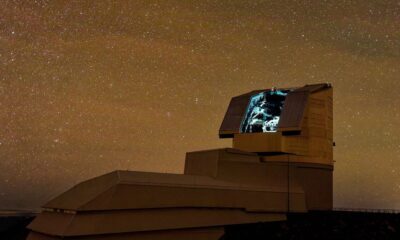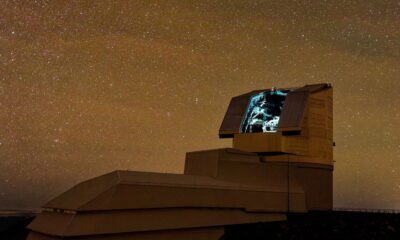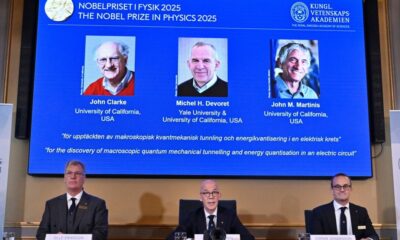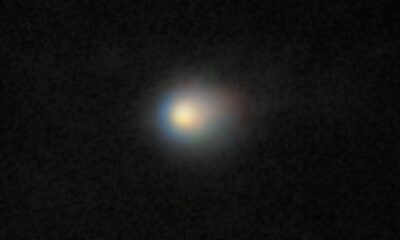Science
Astronomers Challenge Dark Energy Theory with New Findings
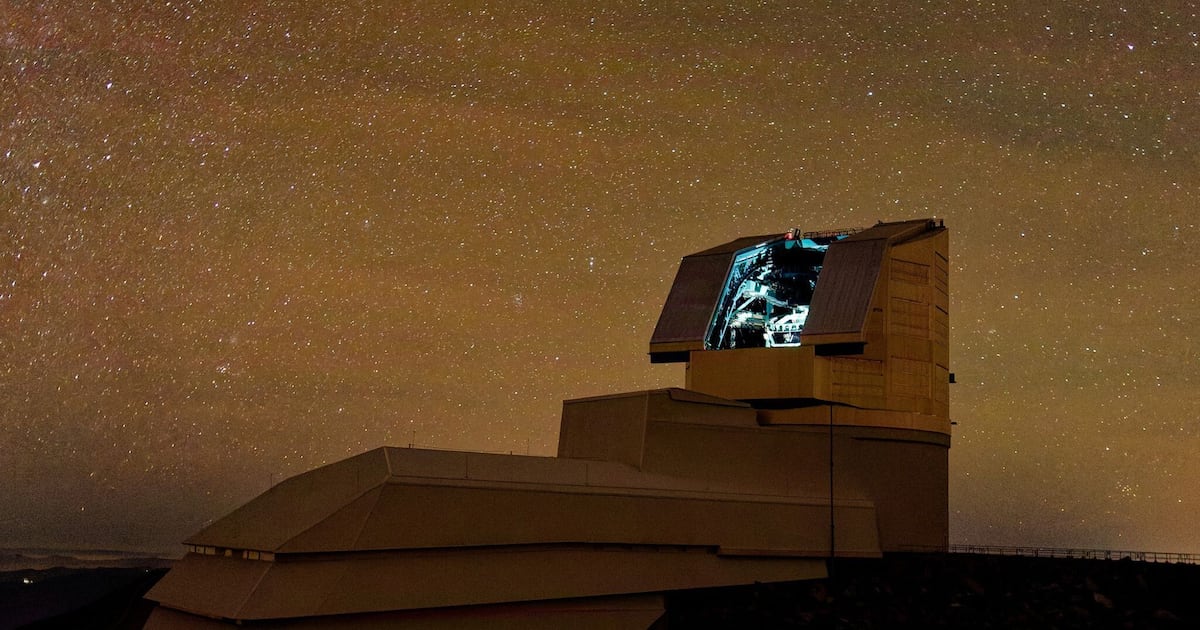
A recent study suggests the universe’s expansion may be slowing down rather than accelerating, challenging long-held astronomical beliefs about dark energy. If validated, these findings could significantly alter our comprehension of the universe and the enigmatic force that counters gravity.
The concept of dark energy emerged in 1998 when two teams of astronomers observed that distant Type 1a supernovas were dimmer than anticipated, leading them to conclude that these stars were receding from Earth at an accelerating pace. This pivotal discovery earned the researchers the 2011 Nobel Prize in Physics. Yet, the true nature of dark energy has remained elusive, prompting ongoing investigations.
In a significant development, a consortium of researchers utilized data from the Dark Energy Spectroscopic Instrument (DESI) to create the largest 3D map of the universe. Their findings indicated that dark energy may be weakening over time, suggesting a potential decline in the universe’s expansion rate.
New research, published on November 6 in the Monthly Notices of the Royal Astronomical Society, supports this notion. Lead researcher Young-Wook Lee, an astrophysics professor at Yonsei University in South Korea, emphasized that their results align with the paradigm shift suggested by the DESI project. “Dark energy is present, but the universe has already entered a decelerating phase today,” he stated.
To arrive at their conclusions, Lee and his colleagues examined a sample of 300 galaxies that host Type 1a supernovas. They proposed that the observed dimming of these distant stars was not solely due to their increased distance from Earth, but also related to the age of the progenitor stars. According to co-author Junhyuk Son, a doctoral candidate in astronomy, previous assumptions regarding the uniform brightness of Type 1a supernovas were challenged.
“Before our work, Type Ia supernovae were considered reliable ‘standard candles,’” Son explained. “We found that their luminosity actually depends on the age of the progenitor stars— youger progenitors yield slightly dimmer supernovae, while older ones are brighter.” The team reported a high statistical confidence of 99.99 percent regarding this age-brightness relationship.
“If confirmed, this would represent the most significant shift in cosmology since the discovery of dark energy in 1998,” Son added. The implications of this research could be profound, potentially indicating that the universe’s expansion is no longer accelerating and that dark energy is not a constant force but instead evolves over time.
The possibility of a slowing expansion raises intriguing questions about the future of the universe. If the expansion continues to decelerate, a contraction could occur, potentially leading to a scenario known as the big crunch. “That is certainly a possibility,” Lee noted. “Even two years ago, the big crunch was considered implausible. But we need further research to assess its actual likelihood.”
Despite the groundbreaking nature of this research, it has faced skepticism within the scientific community. Adam Riess, a professor of physics and astronomy at Johns Hopkins University and a fellow Nobel laureate, criticized the study’s underlying assumptions. “This study rests on a flawed premise,” he stated, arguing that current observations show supernovae originating from young star formations, contradicting the study’s claims.
Lee countered Riess’s assertions, explaining that Type Ia supernovae occur frequently in both old, quiescent galaxies and young, star-forming ones. He also pointed out that the age-brightness correlation has been independently verified by two separate teams in the United States and China, adding credibility to their findings.
Other experts, though not directly involved in the research, echoed concerns raised by Riess. Dan Scolnic, an associate professor of physics at Duke University, cautioned against making unsupported leaps from galaxy age to supernova age. “The universe is still accelerating just fine,” he maintained.
The discourse surrounding these findings highlights the need for rigorous examination and debate in the scientific community. Lee acknowledged the contentious nature of their research, stating, “There is still much work to do to convince everyone in the supernova cosmology community.”
Looking ahead, the newly operational Vera C. Rubin Observatory is poised to further illuminate this debate. Set to launch the Legacy Survey of Space and Time in March 2026, the observatory will capture a comprehensive record of the universe, enabling high-precision age measurements of supernova host galaxies.
“Vera Rubin will discover more than 20,000 new supernova host galaxies, allowing a more direct cosmological test without concerns about age bias,” Lee explained.
As research in this area progresses, the complexities surrounding dark energy continue to deepen. “Dark energy is getting weirder and weirder,” Lee concluded, expressing a sense of anticipation for future discoveries that may reshape our understanding of the universe.
-

 Politics3 weeks ago
Politics3 weeks agoSecwepemc First Nation Seeks Aboriginal Title Over Kamloops Area
-

 World4 months ago
World4 months agoScientists Unearth Ancient Antarctic Ice to Unlock Climate Secrets
-

 Entertainment5 months ago
Entertainment5 months agoTrump and McCormick to Announce $70 Billion Energy Investments
-

 Lifestyle4 months ago
Lifestyle4 months agoTransLink Launches Food Truck Program to Boost Revenue in Vancouver
-

 Science5 months ago
Science5 months agoFour Astronauts Return to Earth After International Space Station Mission
-

 Technology3 months ago
Technology3 months agoApple Notes Enhances Functionality with Markdown Support in macOS 26
-

 Top Stories2 months ago
Top Stories2 months agoUrgent Update: Fatal Crash on Highway 99 Claims Life of Pitt Meadows Man
-

 Lifestyle3 months ago
Lifestyle3 months agoManitoba’s Burger Champion Shines Again Amid Dining Innovations
-

 Sports5 months ago
Sports5 months agoSearch Underway for Missing Hunter Amid Hokkaido Bear Emergency
-

 Politics4 months ago
Politics4 months agoUkrainian Tennis Star Elina Svitolina Faces Death Threats Online
-

 Politics4 months ago
Politics4 months agoCarney Engages First Nations Leaders at Development Law Summit
-

 Technology5 months ago
Technology5 months agoFrosthaven Launches Early Access on July 31, 2025



